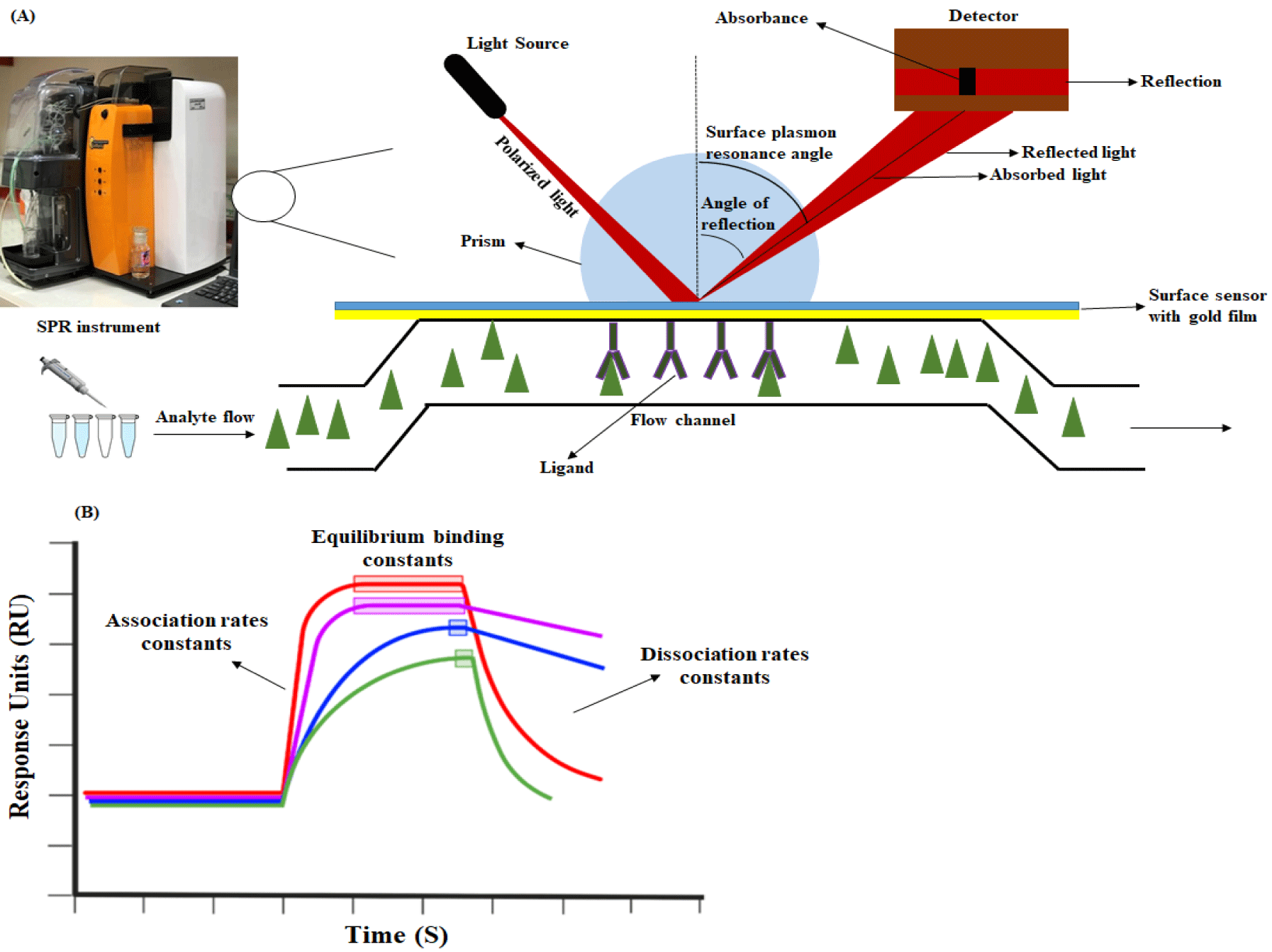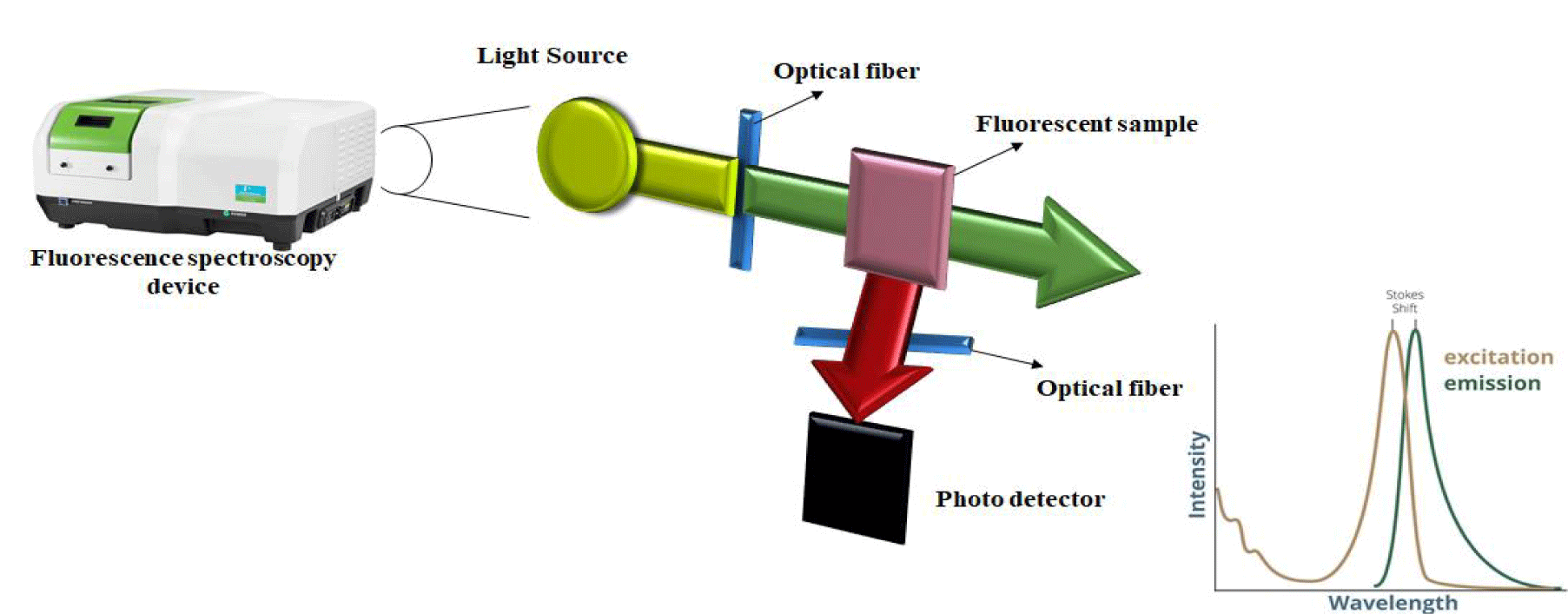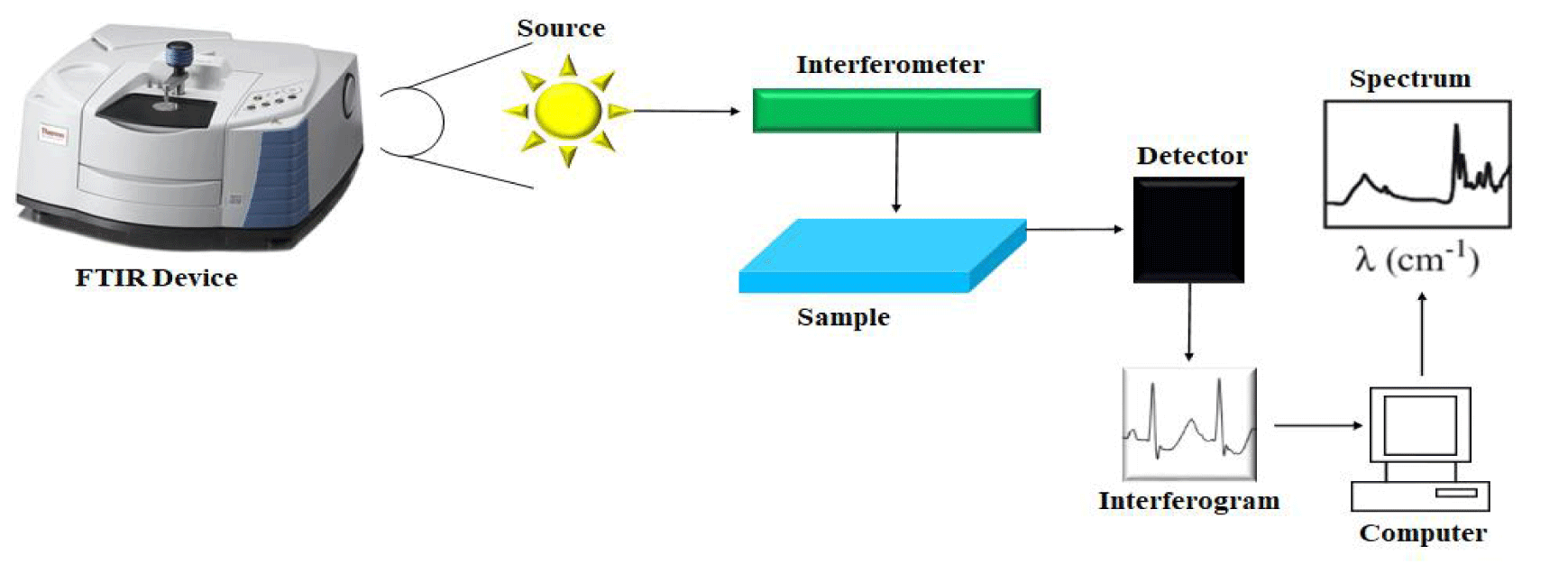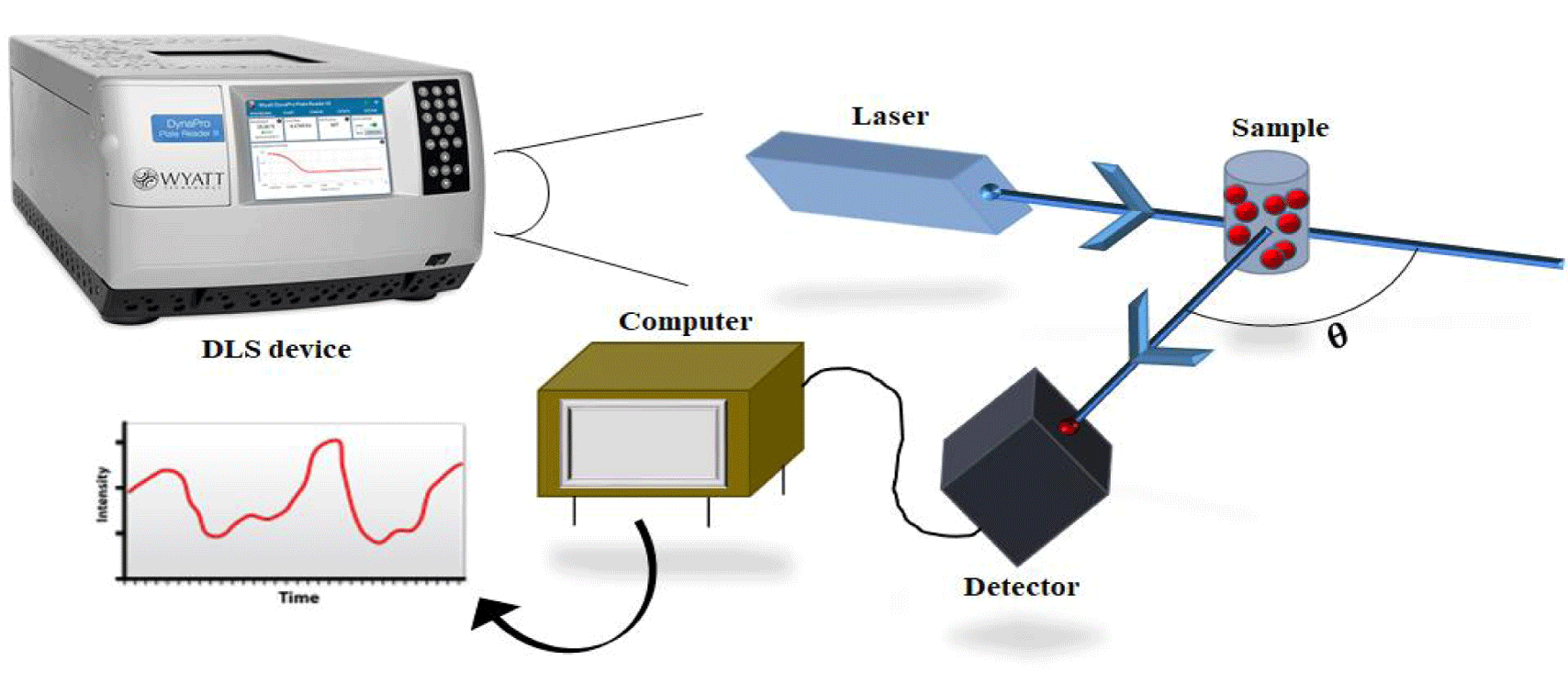Biology Group. 2024 June 18;5(6):614-629. doi: 10.37871/jbres1934.
Advanced in Protein-Ligand Interaction Studies: Optical-Based Spectroscopic Insights and Simulation Perspectives
Amirreza Gholami1* and Saman Shirmohammadi2,3
2Faculty of Physics, University of Tabriz, Tabriz 51665‑163, Iran
3Photonics Devices Research Group, Research Institute of Applied Physics and Astronomy, University of Tabriz, Tabriz 51665‑163, Iran
- Optical-based spectroscopic
- Protein-ligand interaction
- Simulation studies
Abstract
Spectroscopic methods relying on light sources play a crucial role in the identification of protein-ligand interactions. Such experimental techniques open doors for scientists to employ them in disease prevention, treatment, drug synthesis, identification of pathways contributing to different disorders, and unveiling the chemical structure of receptors within the human body. Furthermore, alongside experimental approaches, simulation methods also find utility. The combination of both experimental and theoretical techniques enhances the robustness of researchers' investigations. Conversely, the human body harbors a myriad of distinct proteins, each possessing its own distinct structure and functionality; the disruption of any one of these may lead to a range of ailments. Proteins within the human body have the capacity to engage with diverse ligands, yielding intriguing outcomes. Not only proteins interact with other proteins, but they also engage with pharmaceuticals and other substances within the body. Examination of the bonding types formed between the protein and the specific ligand can be effectively accomplished through optical spectroscopic techniques and simulation inquiries. This paper provides a comprehensive review of recent optical spectroscopy methods, as well as simulation studies, which are currently being employed by researchers in these investigations.
Introduction
The interaction of biomacromolecules and ligands gives useful information about the properties of their active site, biophysical and biochemical characteristics, and the type of bonds involved in them [1]. Proteins in the human body and other animals are the most diverse known biomolecules, whose structure and function identification using various biophysical and biochemical methods can open the important doors in medicine, biology, pathology, and drug identification [2,3]. Researchers and scientists of biology and biochemistry use various methods to know the different characteristics of proteins. These methods can be done both experimentally and theoretically [4,5]. One of the most important methods for identifying proteins is spectroscopic methods. Photon-based spectroscopy methods play a crucial role in identifying and characterizing protein-ligand interactions by providing detailed insights into the structural, dynamical, and functional aspects of the complexes [6-8]. In these types of methods, researchers experimentally study the identification of features such as the active site of the protein and its specific ligand and the characteristics of the chemical bonds involved in the interaction between the protein and the ligand [9,10]. Surface Plasmon Resonance (SPR) [11], Fluorescence spectroscopy [12], Förster Resonance Energy Transfer (FRET) [13], Fourier Transform Infrared (FTIR) [14], Circular Dichroism (CD) [15] and Dynamic Light Scattering (DLS) [16] can be mentioned among the most important spectroscopic methods used to identify the interaction between protein and ligand.
In the realm of in silico approaches, computational spectroscopy methods, including molecular docking [17], lumerical software [18,19] have become invaluable tools for predicting and analyzing protein-ligand interactions. These techniques allow for the exploration of binding modes, energetics, and the structural basis of interactions, often complementing experimental findings and providing a more comprehensive understanding of the molecular underpinnings of protein-ligand recognition [20]. By integrating photon-based spectroscopy methods with computational approaches, researchers can gain a comprehensive understanding of protein-ligand interactions, encompassing both the experimental characterization and the theoretical exploration of these complex systems [21]. The synergy between experimental and computational techniques enables the elucidation of binding mechanisms, the rational design of ligands, and the exploration of structure-activity relationships, all of which are pivotal in the drug discovery and development processes.
Until now, significant studies have been done using spectroscopic laboratory techniques as well as simulation techniques on protein-ligand interactions [22-24]. Among them, studies have been conducted on plasma proteins [25], proteins involved in heart diseases [26] and neurodegenerative diseases [8]. By understanding the role of proteins in the formation of spreading diseases such as heart diseases [27], Alzheimer's [28], Parkinson's [29], various disorder related to the circulatory system [30], and various anemia diseases [31], great steps can be taken to facilitate prevention, treatment and drug production.
In this review article, an attempt has been made to point out the most important experimental and theoretical methods used to identify interactions between proteins and ligands. Moreover, novel and growing methods of identifying these compounds are mentioned.
Spectroscopic Investigations
Surface plasmon resonance technique
When the study of protein and ligand interaction is considered, SPR is undoubtedly one of the most powerful and sensitive tools for their study. SPR instruments typically consist of a light source, a prism, a sensor chip coated with a thin layer of metal (commonly gold), a flow cell for sample introduction, and a detector to monitor changes in reflected light intensity (Figure 1) [32]. Most modern SPR instruments support both single- and multi-channel setups and are equipped with sophisticated software for data collection and analysis [33,34]. The basis of this technique, is as follows: at its core, SPR relies on the collective oscillation of free electrons at the interface between a metal surface and a dielectric medium, such as glass or liquid [11,35]. This oscillation, known as a surface plasmon, interacts with incident light, and its resonant behavior is sensitive to changes at the surface, making it an excellent tool for real-time, label-free detection and analysis of biomolecular interactions. When polarized light (commonly used at a fixed wavelength) strikes a metal surface at the interface with a dielectric medium, such as the glass prism of an SPR instrument in contact with an aqueous sample, the surface plasmons is excited. The angle at which this resonance condition occurs is sensitive to changes in the refractive index near the metal surface, which, in turn, is influenced by the binding of molecules to the surface [36,37]. As a result, any change in the refractive index due to molecular binding leads to a shift in the angle of minimum reflected light intensity, which is then used to derive information about the molecular interaction [38].
When a ligand (immobilized on the sensor surface) binds to an analyte (present in the sample solution), changes in the refractive index at the surface occur, leading to an alteration of the SPR signal. By monitoring these changes, researchers can gain valuable insights into the kinetics and affinity of the interaction, including association (ka) and dissociation (kd) rates constants, equilibrium binding constants, and the stoichiometry of the interaction (Figure 1) [32].
After obtaining the sensograms related to the interaction between the protein and the ligand, the information about the association and dissociation rates on the system will be determined [39]. We use the Eq. 1 to calculate the equilibrium binding constants [39].
where kd is the decayed complex fraction per second and ka is the rate at which molecular complexes form within a single second. The value of KD shows the affinity of the protein-ligand complex together, which have an opposite relationship with each other. By obtaining KD, it can be drawn the graph of lnKD against 1/T and using the slope and the y-intercept, obtain the thermodynamic parameters employing the following Eq [40].
In these equations, T shows us the time and R is used for the universal gas constant, which is equal to 8.314 J.mol-1.K-1. By measuring the thermodynamic factors of enthalpy (ΔH) and entropy (ΔS) it is possible to understand what type of chemical bond is formed between the protein-ligand complexes. When ΔH and ΔS have positive values, hydrophobic interactions are the dominant force, while ΔS<0 and ΔH<0 are indicative of van der Waals force and hydrogen binding. On the other hand, ΔH<0 and ΔS>0 show the presence of electrostatic interactions. But the Gibbs free energy (ΔG° (will show us the spontaneity of the reaction so that if its value is positive, it means that the reaction has been done non-spontaneously [41].
Fluorescence spectroscopy technique
Fluorescence spectroscopy is a widely adopted technique for studying protein-ligand interactions due to its sensitivity, versatility, and ability to provide detailed information about molecular binding events [12,42]. This method involves the excitation of fluorescently labeled proteins or the intrinsic fluorescence of amino acid residues within the protein, such as tryptophan, tyrosine, and phenylalanine, followed by the detection of the emitted fluorescence [43]. When a ligand binds to a protein, it can induce changes in the fluorescence properties of these residues, offering insights into the nature of the binding interaction. The technique enables the exploration of the binding site by monitoring alterations in the fluorescence emission of specific amino acid residues within the protein. This helps in identifying the location and environment of the binding site, shedding light on the intricacies of the molecular interaction [44,45]. Fluorescence spectroscopy allows researchers to determine the stoichiometry of the protein-ligand complex and to monitor thermodynamic parameters, including changes in entropy and enthalpy, providing a comprehensive understanding of the binding process. About protein-ligand interactions, fluorescence spectroscopy involves selective excitation of the protein using an appropriate wavelength, followed by the detection and characterization of the emitted fluorescence. Data analysis often includes examining changes in fluorescence intensity, shifts in emission wavelengths, and alterations in the fluorescence anisotropy of the protein upon ligand binding [23,46].
As shown in figure 2 the basic components of fluorescence instrument include light source, optics, sample compartment, and detector [47]. The light source provides the excitation energy required to promote the fluorescent molecule (or labeled protein) from its ground state to an excited state. This can be achieved using a xenon or mercury lamp, or a laser depending on the excitation wavelength needed. A monochromator or a combination of filters and prisms as optics is employed to select the desired excitation wavelength, allowing only the specific wavelength of light to reach the sample. The sample compartment holds the protein-ligand complex. The interaction is induced by introducing the ligand of interest into the protein solution, initiating the molecular binding event. Photodetectors are used to measure the emission signals resulting from the fluorescent interaction. Photomultiplier tubes, photodiode arrays, or Charge-Coupled Devices (CCDs) are commonly used detectors in fluorescence spectroscopy setups [48,49].
The working principle of this device is done in two ways: excitation and emission and spectral analysis. A specific excitation wavelength is selected and delivered to the sample. Upon excitation, the fluorescent molecules emit light at a longer wavelength due to the relaxation of the excited state. The emitted light is then detected and measured by the photodetector. The emitted fluorescence spectrum provides key information about the interaction. Changes in emission intensity, peak positions, and fluorescence lifetimes can yield insights into the binding affinity, environment, and conformational changes within the protein upon ligand binding [48,50].
When a protein binds to a ligand, it can affect the fluorescence properties of aromatic amino acid residues. For instance, the binding of a ligand to a protein may cause a change in the microenvironment around a tryptophan residue, leading to alterations in its fluorescence properties [51]. These changes in fluorescence can be detected and analyzed to understand the nature of the protein-ligand interaction. After monitoring the fluorescence emission spectra in the protein-ligand complex, the graphs created from the obtained data can be evaluated. Using the obtained data, it is possible to understand what kind of change or shift the studied compounds show and what changes have been made in the emission intensity [51,52]. After that, to identify the possible types of quenching processes, Stern-Volmer Eq. 4 has been employed [51].
Kq = KSV / τ0 (5)
Where F0 and F represent the fluorescence intensity of protein when no quencher and fluorescence intensity of protein in the presence of ligand, respectively. KSV and Kq denote Stern-Volmer constant and the constant of quenching rate, respectively. τ0 and [Q] are the fluorescence lifetime (of which an emitter in its excited state can just emit one single photon at a time) and the molar concentration of the quencher [53]. By graphing F0/F vs the ligand concentration the values of KSV were measured as well as the constants of quenching rate (kq) were calculated using Eq. 5. Fluorescence quenching may occur via two primary mechanisms: dynamic or static. Static quenching is typically observed when a complex forms between ligands and macromolecules, resulting in decreased fluorescence emissions. On the other hand, dynamic quenching involves a collision-based interaction between the quencher and fluorophores while they are in their excited state. Both dynamic and static quenching mechanisms exhibit temperature dependence as a shared characteristic [54,55]. When it comes to dynamic quenching, higher temperatures result in an elevated quenching constant (KSV). In contrast, in the case of static quenching, an increase in temperature consistently leads to a decrease in KSV values [56].
Another equation that is used is called double logarithmic equation (Eq. 6), which is utilized to specify determine the binding constants (Kb) and binding site numbers (n) involving protein-ligand complexes [57].
where, [D]0 and [P]0 are the total concentration of quencher and the total concentration of protein, respectively. By analyzing the curve of (log F0-F/F) vs. , the n and Kb values can be obtained. But in order to obtain the thermodynamic factors, the mentioned eq. 2 and 3 in the SPR section can be used and act in the same way.
The SPR technique confines the reaction within a two-dimensional plane due to the immobilization of ligands on the chip surface, making it non-solution-based. Conversely, fluorescence spectroscopy allows the formation of complexes without spatial constraints, as the molecules in solution can move freely and are not influenced by a surface [58]. Therefore, the results obtained from the SPR and fluorescence spectroscopic techniques can be different [8].
One can determine the FRET between protein-ligand using Eq. 7. This method involves the spectral overlap between the fluorescence spectra of the proteins (functioning as donors) and the absorption spectrum of ligand (acting as acceptors) [59].
Here, r signifies the distance between the donor and acceptor, F0 and F denote the emission intensities of protein in the absence and presence of ligand, respectively, and E represents the efficiency of the energy transfer. Eq. 8 was utilized to calculate R0, which signifies the distance between protein and ligand when the transfer efficiency is 50% [59].
In this equations, K represents the spatial orientation factor between the donor's emission and the acceptor's absorption, while n denotes the refractive index of the solution. Furthermore, Φ signifies the emission quantum yield of protein, and J refers to the spectral intersection integral involving the donor (proteins) and acceptor (ligand). The value of J was obtained from Eq. 9 [59].
where F(λ) represents the emission intensities of protein, and ɛ(λ) signifies the coefficient of extinction (molar absorptivity) of ligand. As part of the analysis, this study adopts specific values for K2, n, and Φ, setting them as 2/3, 1.336, and 0.15, respectively.
Fourier transform infrared spectroscopy
FTIR spectroscopy is an optical technique for studying protein-ligand interactions by analyzing the infrared radiation absorbed by the sample. In the scope of protein-ligand interactions, when a ligand binds to a protein, it can lead to alterations in the vibrational modes of the protein and ligand molecules. These changes manifest as peaks in the FTIR spectrum, providing valuable information about the binding event [60]. FTIR spectroscopy typically involves several key components, including: infrared source, interferometer, sample compartment, and detector (Figure 3). Infrared source produces the infrared radiation used to probe the sample. Often, it includes a source such as a ceramic, nichrome wire, or a glowing silicon carbide element to generate the necessary radiation [60,61]. The heart of the FTIR spectrometer, the interferometer is responsible for splitting the infrared beam, sending it through the sample and a reference, and recombining the beams to produce an interference pattern. Sample compartment is where the protein-ligand mixture is placed. It's essential for the sample to be in a form that allows the infrared radiation to interact with it, commonly as a thin film, solution, or in the form of a crystal. After that, the detector captures the interference pattern produced by the interferometer. It could be based on technologies such as Mercury Cadmium Telluride (MCT) or Deuterated Triglycine Sulfate (DTGS), allowing for the precise measurement of the infrared absorption [62,63].
In this technique, after performing the test in the presence and absence of the ligand the device will give us the corresponding curves for comparison. These comparisons are used to investigate the secondary structure of the protein. When we look at proteins using FTIR spectra, we notice three specific bonds (amid I, II, and III). Within these, one band corresponds to the stretching of N-H bonds, which happens from 2070 to 3300 cm−1. Another band relates to the stretching of C=O bonds, occurring at around 1600-1700 cm−1. In addition, the amid II band is a result of stretching vibrations in amide C-N bonds, found within 1500-1600 cm−1, while the amid III band is linked to both N-H bending and C-N stretching vibrations, falling within 1200-1400 cm−1 [64].
Circular dichroism spectroscopy
Circular Dichroism (CD) spectroscopy is a powerful tool used in biochemistry to study the secondary structure of proteins, peptide folding, and protein-ligand interactions. When it comes to protein-ligand interactions, CD spectroscopy can provide valuable insights into the conformational changes that occur in a protein upon binding to a ligand, as well as information about the binding affinity and stoichiometry of the interaction [15,65].
When a protein interacts with a ligand, such as a small molecule or another protein, this interaction can lead to changes in the protein's secondary structure, which can in turn impact the protein's CD spectrum [66]. CD spectroscopy measures the differential absorption of left- and right-handed circularly polarized light by chiral molecules. Proteins are chiral molecules due to the asymmetric arrangement of amino acids in their secondary structure. CD measures the difference in the absorption of left-handed (L-Circularly polarized) and right-handed (R-Circularly polarized) light by the chiral molecule. Upon ligand binding, the secondary structure of the protein may change, leading to alterations in the CD spectrum. These changes can be characterized by shifts in the shape and intensity of the CD spectra, which can provide information about the binding affinity and the conformational changes that occur in the protein as a result of the interaction with the ligand [15,67].
Figure 4 demonstrates the basic components of a CD spectrometer which include polarized light source, sample compartment, wavelength selector, detector, and data analysis software. The CD spectrometer typically includes a light source that emits polarized light. This light is then split into left- and right-handed circularly polarized components. Sample compartment is where the protein-ligand complex is placed for analysis. The sample compartment usually has a cuvette holder to hold the sample for measurement. A device that selects the wavelength of light to be used for the measurement. This allows for the collection of CD spectra at specific wavelengths, typically in the Ultraviolet (UV) or visible range. After that the detector measures the differential absorbance of the left- and right-handed circularly polarized light. Finally specialized software is used to analyze the spectral data and extract information about the protein-ligand interaction[15,68].
CD spectroscopy, the patterns in the amide groups of proteins, polypeptides, and peptides are mainly due to n→π* and π→π* transitions. These transitions happen in the far Ultraviolet (UV) region and are affected by the shapes of the polypeptide chains. These patterns give details about the various secondary structures in the molecule, like helices, sheets, turns, and other irregular shapes. By studying these structures, we can figure out the overall shape of the protein [69,70].
Dynamic light scattering
DLS is a powerful technique used for studying the size distribution of particles in a solution, including proteins and their interactions with ligands. When it comes to protein-ligand interactions, DLS can help to understand changes in the size of the protein as it binds with the ligand. When particles like proteins or protein-ligand complexes are in solution, they constantly undergo random movements known as Brownian motion [71]. DLS takes advantage of this random motion by analyzing the fluctuations in scattered light caused by the moving particles. As proteins bind with ligands, their size or hydrodynamic radius may change due to complex formation or conformational shifts. DLS measures the fluctuation in scattered light intensity caused by these moving particles and translates it into size distributions. So, by monitoring the changes in the size distributions over time or with varying ligand concentrations, we can gain insights into the kinetics and thermodynamics of interactions [72,73].
In this device, a laser is used to illuminate the sample. The light scattering from the particles is then captured and analyzed. This device captures the scattered light and records its intensity fluctuations as the particles move in solution. DLS uses a correlator to analyze the intensity fluctuations and convert them into information about the size distribution of particles (Figure 5).
Sample holder is where your solution containing the protein-ligand complex is placed for analysis [74]. This technique has recently been used for studies, so that it was used in a limited way before [51,75].
Simulations
Molecular docking
Molecular docking is a computational technique used in the field of structural biology and drug design to predict the preferred orientation of one molecule to a second when bound to each other to form a stable complex [76]. The primary goal of molecular docking is to predict the preferred orientation of a ligand (such as a small molecule drug or substrate) when bound to a target protein, RNA, DNA, or other macromolecule of interest. The process begins with the representation of the 3D structures of the receptor (the target macromolecule) and ligand. Typically, these structures are derived from experimental data such as X-ray crystallography, NMR spectroscopy, or homology modeling [76,77]. The Protein Data Bank (PDB) (http://www.rcsb.org) is a comprehensive resource that provides 3D structural information for large biological molecules, particularly proteins and nucleic acids. It's a crucial tool for researchers in structural biology, bioinformatics, and drug discovery. Users can access and download high-quality structural data, as well as related experimental methods and additional annotations. PDB offers tools for visualizing and analyzing macromolecular structures, providing a deeper understanding of their functions and interactions. PDB connects structural data with various biological and chemical resources, enabling comprehensive analysis and data integration [78]. Table 1 demonstrates a number of three-dimensional proteins structures taken from the PDB.
| Table 1: Three-dimensional proteins structures taken from the PDB. | ||
| Protein name | Identification numbers | 3D structure |
| Human serum albumin | 1AO6 | 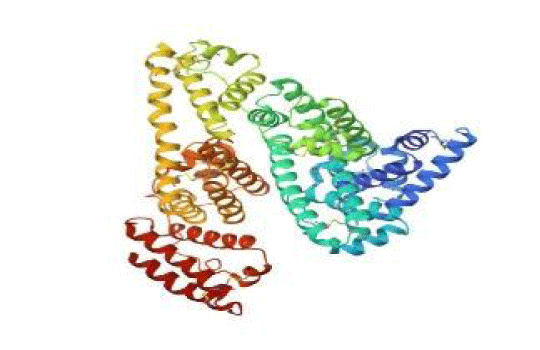 |
| Bovine serum albumin | 4F5S |  |
| Tau protein | 5O3L | 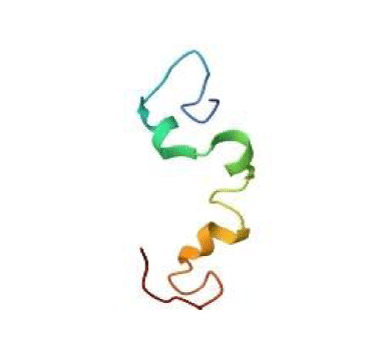 |
| Acetylcholinesterase | 1ACJ |  |
| Hemoglobine | 3WTG | 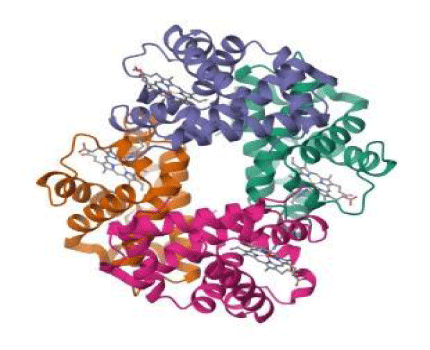 |
| Amyloid precursor protein's transmembrane domain | 2LLM | 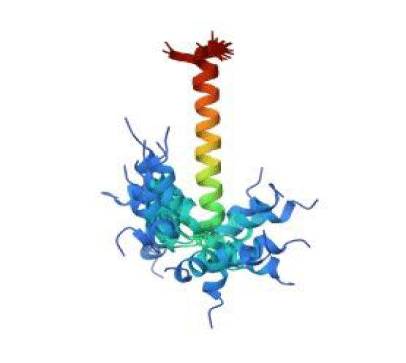 |
| α-synuclein protein | 1XQ8 |  |
| Creatine kinase (from human muscle) | 1I0E | 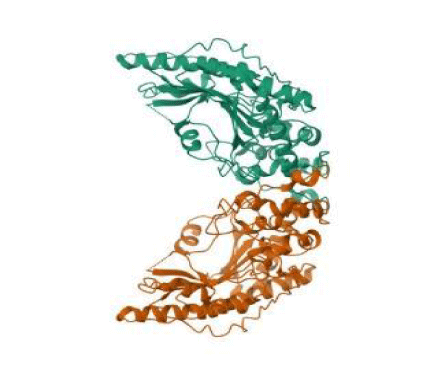 |
PubChem (https://PubChem.ncbi.nlm.nih.gov) as another online website, is a widely used repository of chemical molecules, offering extensive information on their biological activities, physical properties, and related data. It's a vital resource for chemists, biologists, and researchers in drug discovery and toxicology. PubChem provides data on the biological activities of chemicals, including assay results, target proteins, and pathways [79]. Docking algorithms explore the conformational space of the ligand relative to the receptor, searching for the most energetically favorable binding mode. This involves considering all possible translational and rotational orientations of the ligand within the binding site of the receptor. The docked conformations are ranked and scored based on various criteria, such as shape complementarity, electrostatic interactions, van der Waals forces, hydrogen bonding, and solvation effects. These scoring functions aim to estimate the binding free energy or affinity between the ligand and the receptor [78]. The docking software generates a set of potential complex structures, often ranked by their predicted binding affinity. Researchers can then analyze and prioritize these potential binding modes for further experimental validation. Docking software packages, such as AutoDock, DOCK, Glide, Gaussian, and Chimera offer a range of functionalities and have been widely used in academic and industrial research settings [79,80].
AutoDock performs flexible ligand docking, allowing for the exploration of multiple conformations and orientations of the ligand within the binding site of the target protein. It incorporates various scoring functions to evaluate the binding affinity and predict the energetically favorable binding modes. AutoDock employs parameterized force fields to model intermolecular interactions, including van der Waals forces, electrostatic interactions, and hydrogen bonding. The software offers tools for visualizing docked conformations and analyzing the binding modes and interactions between the ligand and the receptor [17,79,81].
DOCK is another popular molecular docking software, utilized for predicting the binding modes and affinities of small molecules with protein targets. DOCK uses efficient search algorithms to explore the conformational space of ligands and identify energetically favorable binding orientations within the receptor's binding site. It incorporates scoring functions to rank the potential binding modes based on various criteria such as shape complementarity, electrostatic interactions, and desolvation energies. Similar to AutoDock, DOCK supports flexible ligand docking, allowing for the exploration of ligand conformations and orientations. DOCK can be integrated with experimental binding affinity data, facilitating the validation and refinement of predicted binding modes [17].
Glide, developed by Schrödinger, is a versatile molecular modeling software suite that includes features for molecular docking and virtual screening. Glide is optimized for high-throughput virtual screening of large compound libraries, aiding in the identification of potential lead compounds for drug discovery. It offers various scoring and sampling methods to predict ligand-receptor binding affinities and explore the conformational space of ligands. Glide is known for its balance of accuracy and speed, making it suitable for large-scale virtual screening campaigns in drug discovery projects. It seamlessly integrates with other tools within the Schrödinger suite, allowing for comprehensive molecular modeling and drug design workflows [17,82].
Gaussian is a powerful computational chemistry software suite used for performing ab initio and Density Functional Theory (DFT) calculations on molecular systems. Gaussian facilitates a wide range of quantum chemical calculations, including geometry optimization, energy minimization, and vibrational frequency analysis. It provides tools for analyzing the electronic structures and properties of chemical compounds, aiding in understanding and predicting their behaviors. Gaussian includes solvation models for studying molecular systems in solution, taking into account the effects of the surrounding environment. It can predict a variety of molecular properties, such as molecular orbitals, electrostatic potentials, and reaction mechanisms [83].
Chimera is a powerful and versatile molecular visualization and analysis software widely utilized in the fields of structural biology, biochemistry, and computational chemistry. Developed by the Resource for Biocomputing, Visualization, and Informatics (RBVI) at the University of California, San Francisco, Chimera offers a comprehensive suite of tools for visualizing, analyzing, and manipulating molecular structures and related data. Chimera provides state-of-the-art visualization capabilities for molecular structures, allowing users to display and manipulate 3D models of proteins, nucleic acids, small molecules, and macromolecular complexes [79]. Users can customize molecular representations, apply color-coding based on various properties (e.g., electrostatic potential, hydrophobicity), and generate publication-quality images and videos. The software supports the visualization and analysis of molecular docking results, enabling users to explore and interpret the binding modes and interactions of ligands with protein targets. Chimera includes tools for structural alignment, superposition, and comparison of multiple molecular structures, facilitating the detailed analysis of similarities and differences between related macromolecules. It offers functionalities for visualizing electron density maps, particularly those derived from X-ray crystallography and cryo-electron microscopy (cryo-EM) experiments [84]. This software can be used to visualize and analyze molecular dynamics trajectories, providing insights into the conformational changes and dynamics of biomolecular systems over time. The software supports the development of extensions and plugins, enabling users to customize and extend its functionalities to suit specific research needs. Chimera offers educational resources, tutorials, and documentation to support users in learning and mastering its various features and applications [79].
Lumerical
Lumerical software is a suite of photonics simulation tools used for designing and optimizing nanophotonic devices, photonic integrated circuits, and other electromagnetic and photonic systems [18,85,86]. The software is utilized by engineers, researchers, and designers in various industries such as telecommunications, healthcare, and consumer electronics to develop cutting-edge photonic devices and systems [87,88].
In the context of light-matter interactions and their applications in studying protein-ligand interactions, Lumerical software can be used to model various optical phenomena and analyze the interactions between light and biological molecules [89]. Lumerical software can be employed to simulate the fluorescence and absorption spectra of biomolecules, providing insights into their optical properties and interactions with light. The software is used to design and optimize photonic structures, plasmonic sensors, and nanophotonic devices for biosensing applications, including the study of protein-ligand interactions [90]. Lumerical's simulation tools are also applied in the modeling and design of optical systems and microscopy techniques used for imaging and studying biomolecular interactions [91].
When delving into protein-ligand interactions, Lumerical's suite could potentially play a role in simulating and analyzing the optical properties of ligands and their interactions with proteins. This could be particularly relevant in scenarios where the interaction induces changes in the refractive index or optical properties of the medium due to complex formation [92,93]. Now, with regards to the refractive index component, Lumerical's FDTD (Finite-Difference Time-Domain) solutions can potentially aid in simulating the changes in the refractive index of the medium due to the interactions. The changes in refractive index might affect the light scattering properties and could potentially be characterized using the simulation capabilities of the software [93]. When using Lumerical for these applications, it's important to carefully consider some notes. Ensuring accurate models of the protein-ligand system and the surrounding medium is crucial. This involves defining the optical properties of the molecules, taking into account potential changes due to binding, and accurately representing the structural aspects that might affect the refractive index properties. Properly parameterizing the interaction-induced changes in refractive index and other relevant optical parameters is vital for an accurate simulation [94]. Validating the results by comparing them with experimental data is essential. Simulated data should be reasonably interpretable in the context of experimental findings [95].
Conclusion
Optical-based spectroscopic methods mentioned in this article have been widely used in protein-ligand interaction studies. The defined simulation studies have been of interest to researchers as well as experimental studies. SPR and fluorescence methods, which are on the one hand, are the most sensitive and accurate methods for studying protein-ligand interaction. In addition to these methods, FTIR and CD methods can be used to study the secondary structures of proteins. DLS method is another method for these studies. Computational methods such as molecular docking is a simulation method that examines the spatial location of the binding of the ligand to the protein. In addition to these methods, Lumerical simulation studies, which are used to investigate light-matter interaction, are a powerful and innovative method that can be considered in future studies. In this review paper, the part of spectroscopic experimental methods and simulation theory methods were evaluated, which was related to protein-ligand interaction studies. This part of studies is actually a combination of biology, biochemistry, biophysics, photonics, and computer simulation, which together can cause significant and powerful advances in the aforementioned sciences.
Highlights
- An introduction to optical-based spectroscopy techniques
- The role of spectroscopy methods in protein-ligand interactions
- Computational methods approaches for protein-ligand interactions
Author Agreement
We the undersigned declare that this manuscript is original, has not been published before and is not currently being considered for publication elsewhere.
We confirm that the manuscript has been read and approved by all named authors and that there are no other persons who satisfied the criteria for authorship but are not listed. We further confirm that the order of authors listed in the manuscript has been approved by all of us.
We understand that the Corresponding Author is the sole contact for the Editorial process. He is responsible for communicating with the other authors about progress, submissions of revisions and final approval of proofs
Signed by all authors as follows:
Amirreza Gholami (Corresponding Author)
Saman Shirmohammadi (Coauthor)
References
- Maity S, Gundampati RK, Suresh Kumar TK, NMR methods to characterize protein-ligand interactions. Natural Product Communications. 2019;14(5):1934578X19849296. doi: 10.1177/1934578X19849296.
- Noor Z, Ahn SB, Baker MS, Ranganathan S, Mohamedali A. Mass spectrometry-based protein identification in proteomics-a review. Brief Bioinform. 2021 Mar 22;22(2):1620-1638. doi: 10.1093/bib/bbz163. PMID: 32047889.
- Iacobucci I, Monaco V, Cozzolino F, Monti M. From classical to new generation approaches: An excursus of -omics methods for investigation of protein-protein interaction networks. J Proteomics. 2021 Jan 6;230:103990. doi: 10.1016/j.jprot.2020.103990. Epub 2020 Sep 20. PMID: 32961344.
- Aletaha N, Gholamreza Dehghan, Leila Sadeghi, Samaneh Rashtbari, Alireza Khataee. Binding mechanism of perphenazine/thioridazine with acetylcholinesterase: Spectroscopic surface plasmon resonance and molecular docking based analysis. Journal of Molecular Liquids. 2023;377:121547. doi: 10.1016/j.molliq.2023.121547.
- Dehkordi MF, Farhadian S, Hashemi-Shahraki F, Rahmani B, Darzi S, Dehghan G. The interaction mechanism of candidone with calf thymus DNA: A multi-spectroscopic and MD simulation study. Int J Biol Macromol. 2023 Apr 30;235:123713. doi: 10.1016/j.ijbiomac.2023.123713. Epub 2023 Feb 16. PMID: 36801300.
- Barone V, Silvia Alessandrini, Malgorzata Biczysko, James R. Cheeseman, David C Clary, Anne B. McCoy, Ryan J. DiRisio, Frank Neese, Mattia Melosso, Cristina Puzzarini. et al., Computational molecular spectroscopy. Nature Reviews Methods Primers, 2021. 1(1): p. 38. doi: 10.1038/s43586-021-00034-1.
- Tiernan H, Byrne B, Kazarian SG. ATR-FTIR spectroscopy and spectroscopic imaging for the analysis of biopharmaceuticals. Spectrochim Acta A Mol Biomol Spectrosc. 2020 Nov 5;241:118636. doi: 10.1016/j.saa.2020.118636. Epub 2020 Jun 22. PMID: 32610215; PMCID: PMC7308041.
- Gholami A, Gholamreza Dehghan, Samaneh Rashtbari, Abolghasem Jouyban. Exploring the interaction of clonazepam and diazepam with tau protein: Multispectral and molecular docking studies. Journal of Molecular Structure. 2022;1258:132669. doi: 10.1016/j.molstruc.2022.132669.
- Gholami A, Dehghan G, Rashtbari S, Jouyban A. Probing the Interactions of Lamotrigine and Phenobarbital with Tau Protein: Experimental and Molecular Modeling Studies. Iran J Pharm Res. 2022 Aug 22;21(1):e129599. doi: 10.5812/ijpr-129599. PMID: 36945338; PMCID: PMC10024808.
- Yekta R, Leila Sadeghi, Sohrab Ahmadi-Kandjani, Pouriya Naziri. The impact of caffeine on tau-tau interaction: LSPR detection, structural modification and molecular dynamics simulation. Journal of Molecular Liquids. 2021;338:115914. doi: 10.1016/j.molliq.2021.115914.
- Prabowo BA, Purwidyantri A, Liu KC. Surface Plasmon Resonance Optical Sensor: A Review on Light Source Technology. Biosensors (Basel). 2018 Aug 26;8(3):80. doi: 10.3390/bios8030080. PMID: 30149679; PMCID: PMC6163427.
- Bose A, Thomas I, Abraham E. Fluorescence spectroscopy and its applications: A Review. Int J Adv Pharm Res. 2018;8(1):1-8. doi: 10.7439/ijapa.v8i1.4578.
- Wu L , Huang C , Emery BP , Sedgwick AC , Bull SD , He XP , Tian H , Yoon J , Sessler JL , James TD . Förster resonance energy transfer (FRET)-based small-molecule sensors and imaging agents. Chem Soc Rev. 2020 Aug 7;49(15):5110-5139. doi: 10.1039/c9cs00318e. Epub 2020 Jul 22. PMID: 32697225; PMCID: PMC7408345.
- Hou X, Songtao L, Zheng C, Feipeng X. Applications of Fourier transform infrared spectroscopy technologies on asphalt materials. Measurement. 2018;121:304-316. doi: 10.1016/j.measurement.2018.03.001.
- Miles AJ , Janes RW , Wallace BA . Tools and methods for circular dichroism spectroscopy of proteins: a tutorial review. Chem Soc Rev. 2021 Aug 7;50(15):8400-8413. doi: 10.1039/d0cs00558d. Epub 2021 Jun 15. PMID: 34132259; PMCID: PMC8328188.
- Rahdar A, Nooshin , Faezeh A, Abu Bin HS. Dynamic light scattering: A useful technique to characterize nanoparticles. Journal of Nanoanalysis. 2019;6(2):80-89. doi: 10.22034/JNA.2019.667079.
- Jakhar R, Mehak DH, Alka K, Chhillar A. Relevance of molecular docking studies in drug designing. Current Bioinformatics. 2020;15(4):270-278. doi: 10.2174/1574893615666191219094216.
- Nahaei FS, Rostami A, Mirtagioglu H, Maghoul A, Simonsen I. Switchable Ultra-Wideband All-Optical Quantum Dot Reflective Semiconductor Optical Amplifier. Nanomaterials (Basel). 2023 Feb 10;13(4):685. doi: 10.3390/nano13040685. PMID: 36839053; PMCID: PMC9962858.
- Akib TBA, Mou SF, Rahman MM, Rana MM, Islam MR, Mehedi IM, Mahmud MAP, Kouzani AZ. Design and Numerical Analysis of a Graphene-Coated SPR Biosensor for Rapid Detection of the Novel Coronavirus. Sensors (Basel). 2021 May 17;21(10):3491. doi: 10.3390/s21103491. PMID: 34067769; PMCID: PMC8156410.
- Fu Y, Zhao J, Chen Z. Insights into the Molecular Mechanisms of Protein-Ligand Interactions by Molecular Docking and Molecular Dynamics Simulation: A Case of Oligopeptide Binding Protein. Comput Math Methods Med. 2018 Dec 4;2018:3502514. doi: 10.1155/2018/3502514. PMID: 30627209; PMCID: PMC6305025.
- Guterres H, Im W. Improving Protein-Ligand Docking Results with High-Throughput Molecular Dynamics Simulations. J Chem Inf Model. 2020 Apr 27;60(4):2189-2198. doi: 10.1021/acs.jcim.0c00057. Epub 2020 Apr 10. PMID: 32227880; PMCID: PMC7534544.
- Shaghaghi M, Samaneh R, Laleh S, Somaieh S, Gholamreza D. Molecular Interactions of danofloxacin with bovine serum albumin: An experimental and theoretical investigation. Iranian Journal of Analytical Chemistry. 2022;9(2):1-9. doi: 10.30473/ijac.2022.63121.1229.
- Rashtbari S, Dehghan G, Sadeghi L, Sareminia L, Iranshahy M, Iranshahi M, Khataee A, Yoon Y. Interaction of bovine serum albumin with ellagic acid and urolithins A and B: Insights from surface plasmon resonance, fluorescence, and molecular docking techniques. Food Chem Toxicol. 2022 Apr;162:112913. doi: 10.1016/j.fct.2022.112913. Epub 2022 Mar 8. PMID: 35276234.
- Yekta R, Ahmadi-Kandjani S, Dehghan G, Rashtbari S, Chaghamirzaei P, Allahveisi S. A new optical method to analyze ligand-protein interaction: Affinity-based screening system. Microchemical Journal. 2020;157:104910. doi: 10.1016/j.microc.2020.104910.
- Shaghaghi M, Rashtbari S, Vejdani S, Dehghan G, Jouyban A, Yekta R. Exploring the interactions of a Tb(III)-quercetin complex with serum albumins (HSA and BSA): spectroscopic and molecular docking studies. Luminescence. 2020 Jun;35(4):512-524. doi: 10.1002/bio.3757. Epub 2019 Dec 28. PMID: 31883206.
- Cheng Y, Li R, Lin Z, Chen F, Dai J, Zhu Z, Chen L, Zhao Y. Structure-activity relationship analysis of dammarane-type natural products as muscle-type creatine kinase activators. Bioorg Med Chem Lett. 2020 Sep 1;30(17):127364. doi: 10.1016/j.bmcl.2020.127364. Epub 2020 Jun 24. PMID: 32738969.
- Wallentin L, Eriksson N, Olszowka M, Grammer TB, Hagström E, Held C, Kleber ME, Koenig W, März W, Stewart RAH, White HD, Åberg M, Siegbahn A. Plasma proteins associated with cardiovascular death in patients with chronic coronary heart disease: A retrospective study. PLoS Med. 2021 Jan 13;18(1):e1003513. doi: 10.1371/journal.pmed.1003513. PMID: 33439866; PMCID: PMC7817029.
- Gholami A. Alzheimer's disease: The role of proteins in formation, mechanisms, and new therapeutic approaches. Neurosci Lett. 2023 Nov 20;817:137532. doi: 10.1016/j.neulet.2023.137532. Epub 2023 Oct 20. PMID: 37866702.
- Gómez-Benito M, Granado N, García-Sanz P, Michel A, Dumoulin M, Moratalla R. Modeling Parkinson's Disease With the Alpha-Synuclein Protein. Front Pharmacol. 2020 Apr 23;11:356. doi: 10.3389/fphar.2020.00356. PMID: 32390826; PMCID: PMC7191035.
- Duan L, Zhang XD, Miao WY, Sun YJ, Xiong G, Wu Q, Li G, Yang P, Yu H, Li H, Wang Y, Zhang M, Hu LY, Tong X, Zhou WH, Yu X. PDGFRβ Cells Rapidly Relay Inflammatory Signal from the Circulatory System to Neurons via Chemokine CCL2. Neuron. 2018 Oct 10;100(1):183-200.e8. doi: 10.1016/j.neuron.2018.08.030. Epub 2018 Sep 27. PMID: 30269986.
- Chakraborty M, Paul S, Mitra I, Bardhan M, Bose M, Saha A, Ganguly T. To reveal the nature of interactions of human hemoglobin with gold nanoparticles having two different morphologies (sphere and star-shaped) by using various spectroscopic techniques. J Photochem Photobiol B. 2018 Jan;178:355-366. doi: 10.1016/j.jphotobiol.2017.11.026. Epub 2017 Nov 22. PMID: 29182925.
- Drescher DG, Selvakumar D, Drescher MJ. Analysis of Protein Interactions by Surface Plasmon Resonance. Adv Protein Chem Struct Biol. 2018;110:1-30. doi: 10.1016/bs.apcsb.2017.07.003. Epub 2017 Sep 12. PMID: 29412994.
- Masson JF. Portable and field-deployed surface plasmon resonance and plasmonic sensors. Analyst. 2020;145(11):3776-3800. doi: 10.1039/D0AN00316F.
- Ucak Ozkaya G, Durak MZ, Akyar I, Karatuna O. Antimicrobial Susceptibility Test for the Determination of Resistant and Susceptible S. aureus and Enterococcus spp. Using a Multi-Channel Surface Plasmon Resonance Device. Diagnostics (Basel). 2019 Nov 15;9(4):191. doi: 10.3390/diagnostics9040191. PMID: 31731591; PMCID: PMC6963824.
- Hinman SS, McKeating KS, Cheng Q. Surface Plasmon Resonance: Material and Interface Design for Universal Accessibility. Anal Chem. 2018 Jan 2;90(1):19-39. doi: 10.1021/acs.analchem.7b04251. Epub 2017 Nov 7. PMID: 29053253; PMCID: PMC6041476.
- Tabasi O, Falamaki C. Recent advancements in the methodologies applied for the sensitivity enhancement of surface plasmon resonance sensors. Analytical methods. 2018;10(32):3906-3925. doi: 10.1039/C8AY00948A.
- Nurrohman DT, Chiu NF. Surface plasmon resonance biosensor performance analysis on 2D material based on graphene and transition metal dichalcogenides. ECS Journal of Solid State Science and Technology, 2020;9(11):115023. doi: 10.1149/2162-8777/abb419.
- Douzi B. Surface Plasmon Resonance: A Sensitive Tool to Study Protein-Protein Interactions. Methods Mol Biol. 2024;2715:363-382. doi: 10.1007/978-1-0716-3445-5_23. PMID: 37930540..
- Taghipour P, Zakariazadeh M, Sharifi M, Ezzati Nazhad Dolatabadi J, Barzegar A. Bovine serum albumin binding study to erlotinib using surface plasmon resonance and molecular docking methods. J Photochem Photobiol B. 2018 Jun;183:11-15. doi: 10.1016/j.jphotobiol.2018.04.008. Epub 2018 Apr 9. PMID: 29679689.
- de Paula Rezende J, Hudson EA, Campos de Paula HM, Coelho YL, da Silva LHM, dos Santos Pires AC. Thermodynamic and kinetic study of epigallocatechin-3-gallate-bovine lactoferrin complex formation determined by surface plasmon resonance (SPR): A comparative study with fluorescence spectroscopy. Food Hydrocolloids, 2019. 95: p. 526-532. doi: 10.1016/j.foodhyd.2019.04.065.
- Rashtbari S, Khataee S, Iranshahi M, Moosavi-Movahedi AA, Hosseinzadeh G, Dehghan G. Experimental investigation and molecular dynamics simulation of the binding of ellagic acid to bovine liver catalase: Activation study and interaction mechanism. Int J Biol Macromol. 2020 Jan 15;143:850-861. doi: 10.1016/j.ijbiomac.2019.09.146. Epub 2019 Nov 15. PMID: 31739034.
- Panigrahi SK, Mishra AK. Inner filter effect in fluorescence spectroscopy: As a problem and as a solution. Journal of Photochemistry and Photobiology C: Photochemistry Reviews, 2019;41:100318. doi: 10.1016/j.jphotochemrev.2019.100318.
- Xing P, Hongzhong C, Huijing X, Yanli Z. selective coassembly of aromatic amino acids to fabricate hydrogels with light irradiation‐induced emission for fluorescent imprint. Advanced Materials, 2018;30(5):1705633. doi: 10.1002/adma.201705633.
- Sikorska E, Khmelinskii I, Sikorski M. Fluorescence spectroscopy and imaging instruments for food quality evaluation, in Evaluation technologies for food quality. Elsevier. 2019;491-533. doi: 10.1016/B978-0-12-814217-2.00019-6.
- Cubuk J, Stuchell-Brereton MD, Soranno A. The biophysics of disordered proteins from the point of view of single-molecule fluorescence spectroscopy. Essays Biochem. 2022 Dec 16;66(7):875-890. doi: 10.1042/EBC20220065. PMID: 36416865; PMCID: PMC9760427.
- Condict L, Kasapis S. Critical issues encountered in the analysis of protein-phenolic binding interactions via fluorescence spectroscopy. Food Hydrocolloids. 2022;124:107219. doi: 10.1016/j.foodhyd.2021.107219.
- Kompany-Zareh M, Akbarian S, Najafpour MM. Unsupervised recognition of components from the interaction of BSA with Fe cluster in different conditions utilizing 2D fluorescence spectroscopy. Sci Rep. 2022 Oct 7;12(1):16875. doi: 10.1038/s41598-022-20768-6. PMID: 36207446; PMCID: PMC9547014.
- Zacharioudaki DE, Fitilis I, Kotti M. Review of Fluorescence Spectroscopy in Environmental Quality Applications. Molecules. 2022 Jul 27;27(15):4801. doi: 10.3390/molecules27154801. PMID: 35956751; PMCID: PMC9370042.
- Wang K, Wu S, Zhao J, Zhou M, Li G, Wang D, Lin L. Quantitative analysis of urea in serum by synchronous modulation and demodulation fluorescence spectroscopy. Spectrochim Acta A Mol Biomol Spectrosc. 2022 Mar 5;268:120645. doi: 10.1016/j.saa.2021.120645. Epub 2021 Nov 18. PMID: 34838422.
- Li W, Li X, Han C, Gao L, Wu H, Li M. A new view into three-dimensional excitation-emission matrix fluorescence spectroscopy for dissolved organic matter. Sci Total Environ. 2023 Jan 10;855:158963. doi: 10.1016/j.scitotenv.2022.158963. Epub 2022 Sep 22. PMID: 36155043.
- Khalili L. Dehghan G, Moosavi-Movahedi AA, Yoon Y. In vitro and in silico insights into the molecular interaction mechanism of acetylshikonin with bovine serum albumin. Journal of Molecular Liquids, 2022;365:120191. doi: 10.1016/j.molliq.2022.120191.
- Heidary Alizadeh B, Dehghan GH, Derakhsh Ahmadi V, Moghimi S, Asadipour A, Foroumadi A. Spectroscopic and molecular docking studies on DNA binding interaction of podophyllotoxin. Journal of Sciences, Islamic Republic of Iran. 2018;29(2):121-127. doi: 10.22059/jsciences.2018.65018.
- Mokaberi P, Babayan-Mashhadi F, Amiri Tehrani Zadeh Z, Saberi MR, Chamani J. Analysis of the interaction behavior between Nano-Curcumin and two human serum proteins: combining spectroscopy and molecular stimulation to understand protein-protein interaction. J Biomol Struct Dyn. 2021 Jun;39(9):3358-3377. doi: 10.1080/07391102.2020.1766570. Epub 2020 May 20. PMID: 32397834.
- Cheng W, Jinliang M, Sijia W, Ruixin L, Suyue W, Jialiang H, Huaibin K, Lili L, Feng X. Interaction mechanism between resveratrol and ovalbumin based on fluorescence spectroscopy and molecular dynamic simulation. Lwt. 2021;146:111455. doi: 10.1016/j.lwt.2021.111455.
- Shaw M, Samanta D, Salam Shaik A, Bhattacharya A, Basu R, Mondal I, Pathak A. Solvent-induced switching between static and dynamic fluorescence quenching of N, S Co-doped carbon dots in sensing of Crotonaldehyde: A detailed systematic study. Optical Materials, 2023. 137: p. 113600. doi: 10.1016/j.optmat.2023.113600.
- Koppal VV, Melavanki R, Kusanur R, Patil NR. Analysis of Fluorescence Quenching of Coumarin Derivative under Steady State and Transient State Methods. J Fluoresc. 2021 Mar;31(2):393-400. doi: 10.1007/s10895-020-02663-3. Epub 2021 Jan 6. PMID: 33405018.
- Asemi-Esfahani Z, Behzad S, Sadegh F, Lida M.Food additive dye-lysozyme complexation: Determination of binding constants and binding sites by fluorescence spectroscopy and modeling methods. Journal of Molecular Liquids. 2022;363:119749. doi: 10.1016/j.molliq.2022.119749.
- Sistani P, Dehghan G, Sadeghi L. Structural and kinetic insights into HIV-1 reverse transcriptase inhibition by farnesiferol C. Int J Biol Macromol. 2021 Mar 31;174:309-318. doi: 10.1016/j.ijbiomac.2021.01.173. Epub 2021 Jan 29. PMID: 33524481.
- Liao J, Madahar V, Dang R, Jiang L. Quantitative FRET (qFRET) Technology for the Determination of Protein-Protein Interaction Affinity in Solution. Molecules. 2021 Oct 20;26(21):6339. doi: 10.3390/molecules26216339. PMID: 34770748; PMCID: PMC8588070.
- Magalhães S, Goodfellow BJ, Nunes A. FTIR spectroscopy in biomedical research: How to get the most out of its potential. Applied Spectroscopy Reviews. 2021;56(8-10):869-907. doi: 10.1080/05704928.2021.1946822.
- Jozanikohan G, Abarghooei MN. The Fourier transform infrared spectroscopy (FTIR) analysis for the clay mineralogy studies in a clastic reservoir. Journal of Petroleum Exploration and Production Technology. 2022:1-14. doi: 10.1007/s13202-021-01449-y.
- Guerrero‐Pérez MO, Patience GS. Experimental methods in chemical engineering: Fourier transform infrared spectroscopy- FTIR. The Canadian Journal of Chemical Engineering. 2020;98(1):25-33. doi: 10.1002/cjce.23664.
- Fakayode SO, Baker G, Bwambok DK, Bhawawet N, Elzey B, Siraj N, Macchi S, Pollard D, Pérez, A'ja V Duncan RL, Warner I. Molecular (Raman, NIR, and FTIR) spectroscopy and multivariate analysis in consumable products analysis1. Applied Spectroscopy Reviews. 2020;55(8):647-723.
- Miller LM, Bourassa MW, Smith RJ. FTIR spectroscopic imaging of protein aggregation in living cells. Biochim Biophys Acta. 2013 Oct;1828(10):2339-46. doi: 10.1016/j.bbamem.2013.01.014. Epub 2013 Jan 25. PMID: 23357359; PMCID: PMC3722250.
- Zhao X, Wang Y, Zhao D. Structural analysis of biomacromolecules using circular dichroism spectroscopy. Advanced Spectroscopic Methods to Study Biomolecular Structure and Dynamics. 2023:77-103. doi: 10.1016/B978-0-323-99127-8.00013-1.
- Ojaghi S, Soheila M, Mojtaba A, Sirous G, Nooshin B, Sajjad E, Reza K. Sunset yellow degradation product, as an efficient water-soluble inducer, accelerates 1N4R Tau amyloid oligomerization: In vitro preliminary evidence against the food colorant safety in terms of “Triggered Amyloid Aggregation”. Bioorganic chemistry. 2020;103:104123. doi: 10.1016/j.bioorg.2020.104123.
- Keiderling TA, Lakhani A. Mini review: Instrumentation for vibrational circular dichroism spectroscopy, still a role for dispersive instruments. Chirality. 2018 Mar;30(3):238-253. doi: 10.1002/chir.22799. Epub 2018 Jan 2. PMID: 29293282.
- Mitri F. Optical radiation force circular dichroism spectroscopy. Journal of Quantitative Spectroscopy and Radiative Transfer. 2020;244:106850.
- Sonawane SK, Chidambaram H, Boral D, Gorantla NV, Balmik AA, Dangi A, Ramasamy S, Marelli UK, Chinnathambi S. EGCG impedes human Tau aggregation and interacts with Tau. Sci Rep. 2020 Jul 28;10(1):12579. doi: 10.1038/s41598-020-69429-6. PMID: 32724104; PMCID: PMC7387440.
- Kumar P, Bhardwaj T, Garg N, Giri R. Microsecond simulations and CD spectroscopy reveals the intrinsically disordered nature of SARS-CoV-2 spike-C-terminal cytoplasmic tail (residues 1242-1273) in isolation. Virology. 2022 Jan;566:42-55. doi: 10.1016/j.virol.2021.11.005. Epub 2021 Nov 27. PMID: 34864296; PMCID: PMC8626822.
- Zhang C, Jin Z, Zeng B, Wang W, Palui G, Mattoussi H. Characterizing the Brownian Diffusion of Nanocolloids and Molecular Solutions: Diffusion-Ordered NMR Spectroscopy vs Dynamic Light Scattering. J Phys Chem B. 2020 Jun 4;124(22):4631-4650. doi: 10.1021/acs.jpcb.0c02177. Epub 2020 May 21. PMID: 32356987.
- Waghmare M, Bipin SK, Chaudhari P, Dongre PM. Multiple layer formation of bovine serum albumin on silver nanoparticles revealed by dynamic light scattering and spectroscopic techniques. Journal of Nanoparticle Research. 2018;20:1-21. doi: 10.1007/s11051-018-4286-3.
- Morozova OV, Pavlova ER, Bagrov DV, Barinov NA, Prusakov KA, Isaeva EI, Podgorsky VV, Basmanov DV, Klinov DV. Protein nanoparticles with ligand-binding and enzymatic activities. Int J Nanomedicine. 2018 Oct 18;13:6637-6646. doi: 10.2147/IJN.S177627. PMID: 30425479; PMCID: PMC6202000.
- Carvalho PM, Felício MR, Santos NC, Gonçalves S, Domingues MM. Application of Light Scattering Techniques to Nanoparticle Characterization and Development. Front Chem. 2018 Jun 25;6:237. doi: 10.3389/fchem.2018.00237. PMID: 29988578; PMCID: PMC6026678.
- Guo XJ, Hao AJ, Han XW, Kang PL, Jiang YC, Zhang XJ. The investigation of the interaction between ribavirin and bovine serum albumin by spectroscopic methods. Mol Biol Rep. 2011 Aug;38(6):4185-92. doi: 10.1007/s11033-010-0539-7. Epub 2010 Dec 3. PMID: 21127994.
- Fan J, Fu A, Zhang L. Progress in molecular docking. Quantitative Biology, 2019;7:83-89. doi: 10.1007/s40484-019-0172-y.
- Prieto-Martínez FD, Arciniega M, Medina-Franco JL. Molecular docking: current advances and challenges. TIP. Revista especializada en ciencias químico-biológicas. 2018;21. doi: 10.22201/fesz.23958723e.2018.0.143.
- Sethi A, Khusbhoo J, Sasikala K, Mallika A. Molecular docking in modern drug discovery: Principles and recent applications. Drug discovery and development-new advances, 2019. 2: p. 1-21. doi: 10.5772/intechopen.85991.
- Butt SS, Yasmin B, Maria S, Mehak R.Molecular docking using chimera and autodock vina software for nonbioinformaticians. JMIR Bioinformatics and Biotechnology. 2020;1(1):e14232. doi: 10.2196/14232.
- Dong D, Xu Z, Zhong W, Peng S. Parallelization of Molecular Docking: A Review. Curr Top Med Chem. 2018;18(12):1015-1028. doi: 10.2174/1568026618666180821145215. PMID: 30129415.
- Solis-Vasquez L, Tillack AF, Santos-Martins D, Koch A, LeGrand S, Forli S. Benchmarking the Performance of Irregular Computations in AutoDock-GPU Molecular Docking. Parallel Comput. 2022 Mar;109:102861. doi: 10.1016/j.parco.2021.102861. Epub 2021 Nov 11. PMID: 34898769; PMCID: PMC8654209.
- Reddy KK, Rathore RS, Srujana P, Burri RR, Reddy CR, Sumakanth M, Reddanna P, Reddy MR. Performance Evaluation of Docking Programs- Glide, GOLD, AutoDock & SurflexDock, Using Free Energy Perturbation Reference Data: A Case Study of Fructose-1, 6-bisphosphatase-AMP Analogs. Mini Rev Med Chem. 2020;20(12):1179-1187. doi: 10.2174/1389557520666200526183353. PMID: 32459606.
- Banchi L, Fingerhuth M, Babej T, Ing C, Arrazola JM. Molecular docking with Gaussian Boson Sampling. Sci Adv. 2020 Jun 5;6(23):eaax1950. doi: 10.1126/sciadv.aax1950. PMID: 32548251; PMCID: PMC7274809.
- Afef G, Hitler L, Thierry R, Isangb BB, Innocent B, Riadh K. X-ray crystallography, spectral analysis, DFT studies, and molecular docking of (C9H15N3)[CdCl4] hybrid material against methicillin-resistant Staphylococcus aureus (MRSA). Polycyclic Aromatic Compounds. 2023:1-23.
- Nahaei FS, Rostami A, Mirtagioglu H, Maghoul A, Simonsen I. Switchable Ultra-Wideband All-Optical Quantum Dot Reflective Semiconductor Optical Amplifier. Nanomaterials (Basel). 2023 Feb 10;13(4):685. doi: 10.3390/nano13040685. PMID: 36839053; PMCID: PMC9962858.
- Serat Nahaei F, Rostami A, Matloub S. Ultrabroadband reflective semiconductor optical amplifier using superimposed quantum dots. Journal of Nanophotonics. 2021;15(3):036009-036009. doi: 10.1117/1.JNP.15.036009.
- 87Nahaei FS, Rostami A, Mirtaheri P. Quantum Dot Reflective Semiconductor Optical Amplifiers: Optical Pumping Compared with Electrical Pumping. Nanomaterials (Basel). 2022 Jun 22;12(13):2143. doi: 10.3390/nano12132143. PMID: 35807979; PMCID: PMC9267988.
- Nahaei FS, Rostami A, Matloub S. Selective band amplification in ultra-broadband superimposed quantum dot reflective semiconductor optical amplifiers. Appl Opt. 2022 May 20;61(15):4509-4517. doi: 10.1364/AO.427496. PMID: 36256292.
- Viscomi F. Light Matter interaction in hybrid plasmonic/photonic nanogaps. 2020.
- Luo Z, Yajuan W, Lihui L, Ziyu L, Chenguang Z, Xin Y, Ming H, Jianhua H, Delang L, Xiaoli Z, Dong L, Anlian P. Plasmonically engineered light-matter interactions in Au-nanoparticle/MoS 2 heterostructures for artificial optoelectronic synapse. Nano Research. 2022;1-9. doi: 10.1007/s12274-021-3875-0.
- Khan SA, Khan Nz, Xie Y, Abbas MT, Rauf M, Mehmood I, Runowski M, Agathopoulos S, Zhu J. Optical sensing by metamaterials and metasurfaces: from physics to biomolecule detection. Advanced Optical Materials. 2022;10(18):2200500. doi: 1002/adom.202200500.
- Adak S, Tripathi LN. Nanoantenna enhanced terahertz interaction of biomolecules. Analyst, 2019;144(21):6172-6192. doi: 10.1039/C9AN00798A.
- Bensalah H, Hocini A, Bahri H, Khedrouche D, Ingebrandt S, Pachauri V. A plasmonic refractive index sensor with high sensitivity and its application for temperature and detection of biomolecules. Journal of Optics. 2023;52(3):1035-1046. doi: 10.1007/s12596-022-00922-z
- Pant U, Mohapatra S, Moirangthem RS. Total internal reflection ellipsometry based SPR sensor for studying biomolecular interaction. Materials Today: Proceedings. 2020;28:254-257. 10.1016/j.matpr.2020.01.602.
- Ambika S, Manojkumar Y, Arunachalam S, Gowdhami B, Meenakshi Sundaram KK, Solomon RV, Venuvanalingam P, Akbarsha MA, Sundararaman M. Biomolecular Interaction, Anti-Cancer and Anti-Angiogenic Properties of Cobalt(III) Schiff Base Complexes. Sci Rep. 2019 Feb 25;9(1):2721. doi: 10.1038/s41598-019-39179-1. PMID: 30804454; PMCID: PMC6389928.
Content Alerts
SignUp to our
Content alerts.
 This work is licensed under a Creative Commons Attribution 4.0 International License.
This work is licensed under a Creative Commons Attribution 4.0 International License.





